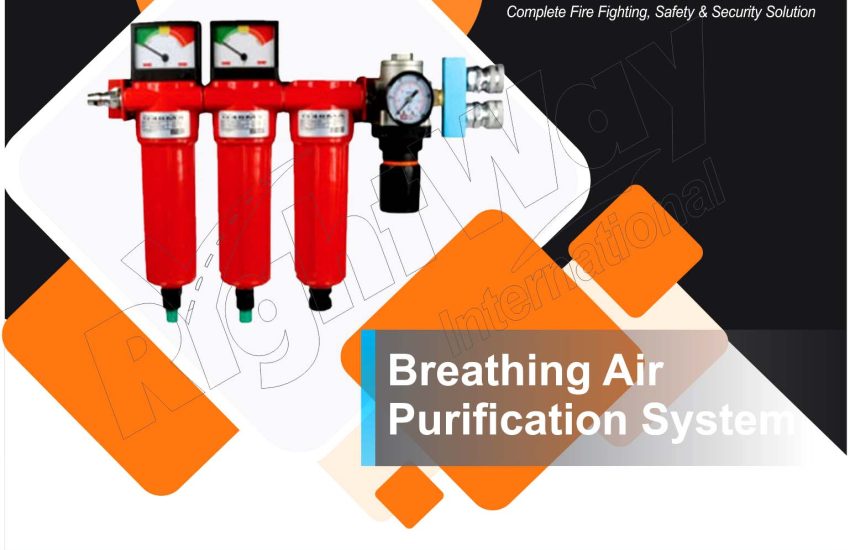Breathing Air Purification System ensures that air supplied to respirators and breathing apparatus is clean, safe, and free from harmful contaminants. These systems are vital in industrial settings, emergency response, and confined spaces, where air quality may be compromised.
1. Purpose and Importance
Breathing air purification systems serve several critical functions:
Removing Contaminants
They filter out harmful substances like dust, fumes, gases, and vapors using specialized filters.
Ensuring Safety
By supplying clean air, these systems protect users from respiratory hazards, enhancing overall safety in dangerous environments.
Meeting Regulatory Standards
They are designed to comply with safety standards to ensure air quality meets legal and health requirements.
2. Key Components of the System
Air Intake
This is the entry point where ambient air enters the system. It typically includes pre-filters to eliminate large particles.
Filtration Mechanisms
Different filters target various types of contaminants:
- Particulate Filters remove solid particles like dust and pollen.
- Activated Carbon Filters absorb chemical fumes and odors.
- Chemical Scrubbers neutralize specific substances, such as acids or bases.
Compressor
Some systems use a compressor to pressurize air, increasing filtration efficiency and ensuring effective air distribution.
Pressure Regulators
These components control air pressure for consistent flow and safe system operation.
Air Distribution System
Purified air is delivered through hoses, connectors, and regulators to the respirators or breathing apparatus.
Monitoring and Control Units
These include sensors and gauges to monitor:
- Air quality
- Pressure levels
- Filter status
Alarms or indicators notify users when maintenance is required or if the air quality drops.
Maintenance Components
Spare filters, cleaning supplies, and replacement parts are essential for routine upkeep and optimal system performance.
3. Types of Breathing Air Purification Systems
Standalone Purifiers
Independent units that clean air before it reaches the respirator. These are common in both industrial and emergency settings.
Integrated Systems
Built into larger respiratory setups, like SCBA (Self-Contained Breathing Apparatus) or airline respirators, offering compact solutions.
Portable Purifiers
Mobile systems that provide flexible air purification in temporary or changing environments.
Fixed Installations
Permanent systems, typically installed in factories or labs, to continuously purify air in specific areas.
4. Common Applications
Industrial Environments
Used in chemical plants, manufacturing sites, and laboratories to protect workers from airborne contaminants.
Emergency Response
Firefighters and rescue teams rely on these systems during operations in hazardous conditions.
Confined Spaces
Essential in places with limited ventilation, like tanks, tunnels, or underground facilities.
Diving Operations
Ensure divers receive safe, purified air in surface-supplied diving systems.
5. Maintenance and Care
Routine Inspections
Inspect the system regularly to identify signs of wear, damage, or malfunction.
Filter Replacement
Replace filters as recommended by the manufacturer or when they show signs of saturation or clogging.
System Cleaning
Clean system components using approved agents to maintain hygiene and performance.
Calibration and Testing
Test and calibrate the system periodically to confirm that it delivers safe, breathable air and meets operational standards.
6. Safety Considerations
To ensure safe use and maintenance of the system:
User Training
All personnel must be trained to operate, maintain, and troubleshoot the purification system.
Emergency Preparedness
Develop contingency plans in case the system fails or becomes compromised.
Standards Compliance
Adhere to all relevant health and safety regulations to ensure effective air purification.
7. Regulatory Compliance
These systems must meet standards set by leading regulatory bodies, including:
- OSHA (Occupational Safety and Health Administration)
- NIOSH (National Institute for Occupational Safety and Health)
- CEN (European Committee for Standardization)
- ANSI (American National Standards Institute)
Conclusion
Breathing air purification systems play a critical role in safeguarding workers and responders exposed to hazardous environments. Understanding their components, types, and applications—along with regular maintenance and adherence to safety standards—ensures they remain effective and reliable. By investing in proper care and training, users can maintain a consistent supply of clean, breathable air and minimize risks associated with poor air quality.


